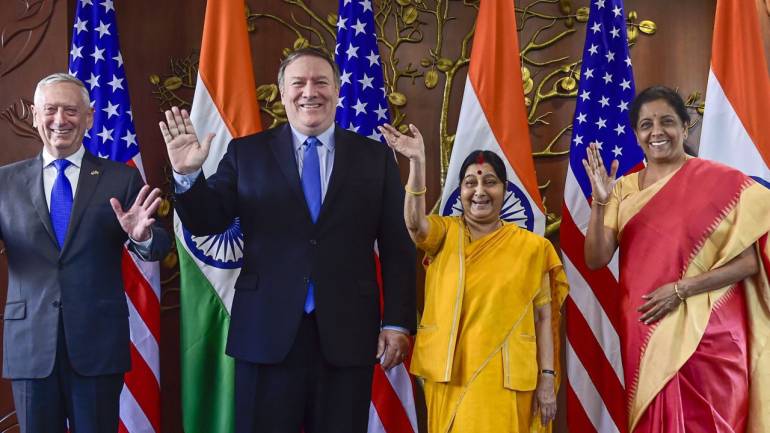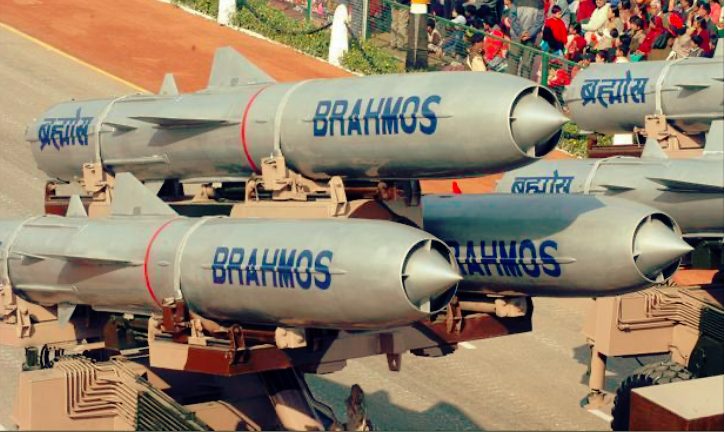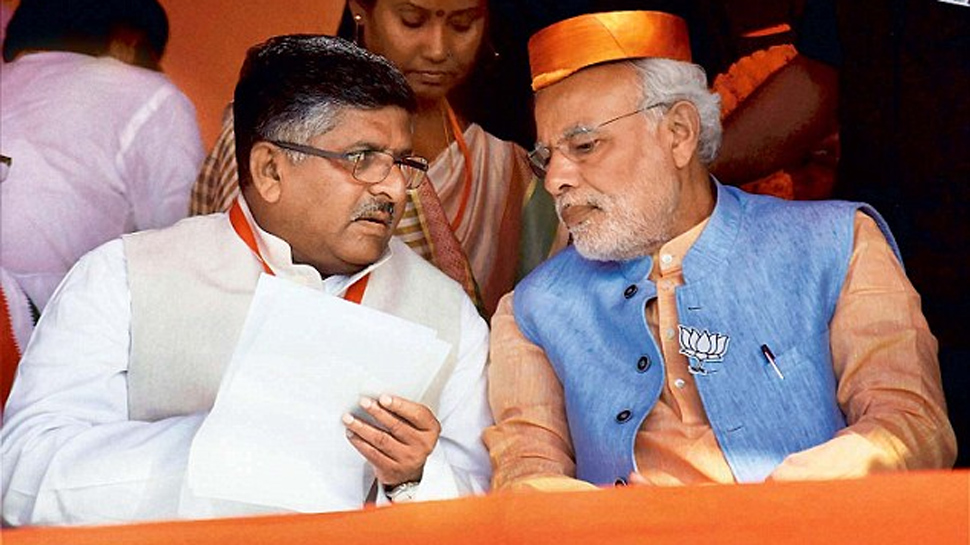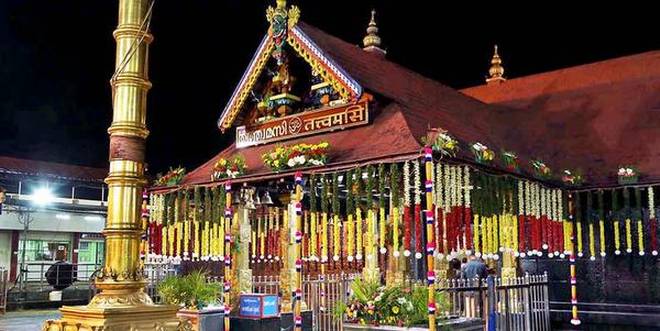India and United States on Thursday signed an agreement to provide the armed forces of the two countries greater access to secure military communication network of each other.
New Delhi and Washington D.C. also agreed to hold a joint war drill off the eastern coast of India in 2019, involving the armies, navies and air forces of the two nations.
The Communications Compatibility and Security Agreement (COMCASA) was signed after External Affairs Minister Sushma Swaraj and Defence Minister Nirmala Sitharaman held the first India-America 2+2 dialogue with the US Secretary of State, Mike Pompeo, and Secretary of Defence, James N Mattis, in New Delhi.
The COMCASA, which was signed by Sitharaman and Mattis, will facilitate access to advanced defense systems and enable India to optimally utilize its existing military hardware sourced from the US, according to a joint statement issued after the 2+2 dialogue. It is one of the three “foundational pacts”, which Washington D.C. has since long been nudging New Delhi to sign, promising that they would make it easier for India to access advanced defence technologies from the US.
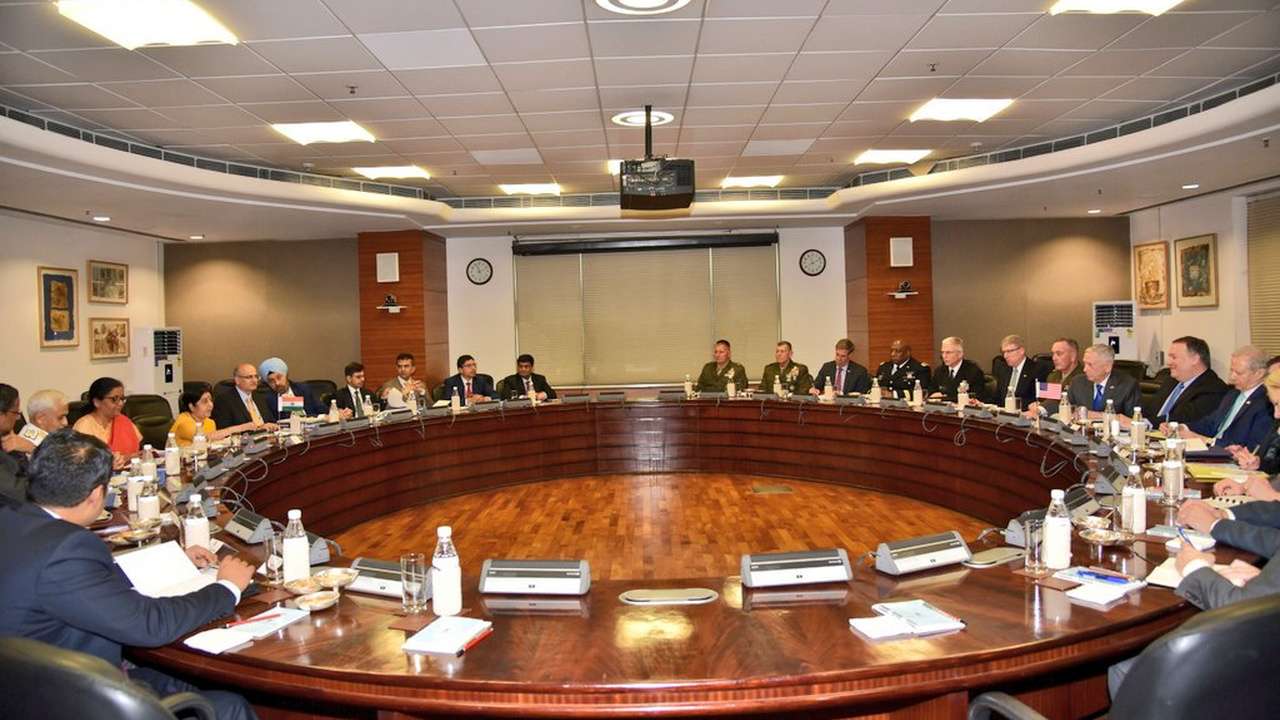
The first such pact India signed with the US was the Logistics Exchange Memorandum of Agreement or the LEMOA.
It was inked in 2016 by then Defence Minister Manohar Parrikar and his counterpart US Secretary of Defence Ashton Carter. The LEMOA made it obligatory for both India and the US to support each other’s aircraft, ships and personnel with logistics, fuel and spares.
The third in the series of the proposed pacts is the Basic Exchange and Cooperation Agreement (BECA) for geo-spatial ties, which is yet to be signed.
The erstwhile Congress-led Government in New Delhi resisted pressure from the US to sign the three agreements, ostensibly due to concerns that they would severely compromise the strategic autonomy of India.
The negotiations between India and the US over the agreements, however, gained momentum after the BJP-led Government headed by Prime Minister Narendra Modi took office in New Delhi.
Sitharaman told journalist after the 2+2 dialogue on Thursday that the COMCASA would enable India to access advanced technologies from the US and enhance its defence preparedness.
Mattis echoed her and said that the “landmark agreement” would deepen military-to-military cooperation and enhance US ability to share with India “the most defence technologies” and thus making both the nations “stronger”.
India and the US on Thursday also agreed to set up hotlines for speedy communications between the offices of External Affairs Minister and US Secretary of State as well as between the offices of Defence Minister and US Secretary of Defence.
A Memorandum of Intent between Defense Innovation Unit (DIU) of the US and the Innovation for Defence Excellence (DIO-iDEX) was inked just on the eve of the 2+2 dialogue.
The parleys on Thursday also saw both sides agreeing to begin negotiations on an Industrial Security Annex (ISA), which would support closer defense industry cooperation and collaboration between India and the US.
The 2+2 dialogue is a new format of diplomatic engagement between India and the US. Prime Minister Narendra Modi and American President Donald Trump had agreed on the new format of engagement when they had met in Washington D.C. in June 2017.
Pompeo and Mattis arrived in New Delhi on Wednesday to take part in what is being termed as “biggest diplomatic engagement” between India and the US of the current year. Pompeo had a brief visit to Islamabad before flying to New Delhi. Mattis, however, flew to New Delhi directly from Washington D.C.

